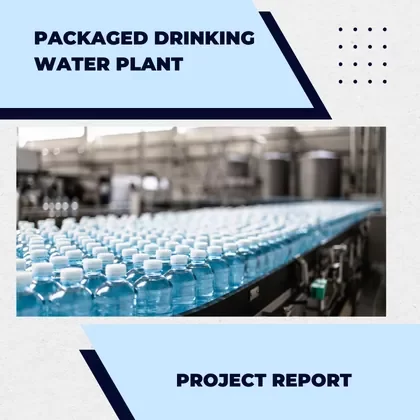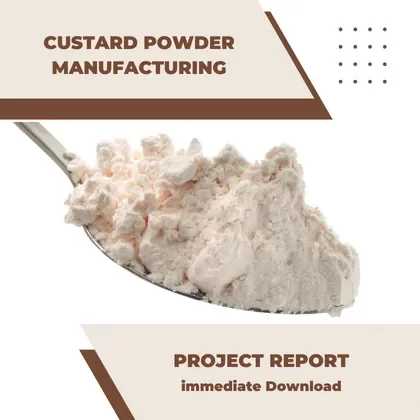Description
You can immediately download the Project Report of Milk Powder Processing Plant in PDF format. The objective of the project report is to make the new entrepreneurs coming into the field of milk powder aware of the various aspects of the business. This report is also helpful in preparing project reports for bank loans and other works. To fulfill the pre-feasibility objective; The document covers various aspects of project conception, development, startup, marketing, finance and business management.
INTRODCUTION
The product is heavy in calcium and other vital nutrients and is highly perishable from the human diet. Phosphorus, protein, potassium, vitamin A, and other nutrients are found in milk. It is a powdered dairy product prepared by dehydrating liquid milk and passing it through several procedures. The dried or desiccated milk is known as milk powder. Whole milk is used to make it. The composition of dry milk is determined by the milk used to make it.
Powdered milk is a cow milk-based dairy product. Fat and fat-soluble vitamins are low in skimmed milk powder, but proteins, water-soluble vitamins, and minerals are conserved. Milk powders are divided into two categories. Full cream milk powder (FCMP) and skimmed milk powder (SMP). FCMP has 26% fat, while Skimmed Milk Powder has 1.5 per cent fat. Skimmed milk powder is the way to go if you’re watching your calories. FCMP is used to make curds and other dairy products.
Dairy Whitener is mostly used in the preparation of tea and coffee. Fat comes in a variety of forms. However, dairy whiteners made by Nestle, Britannia, or Amul will include 19 per cent fat and 19 per cent sugar. DW is sweetened with sugar.
Milk Powder Manufacturing Plant Business Plan at a Glance
Table of Contents
- 1 Milk Powder Manufacturing Plant Business Plan at a Glance
- 2 Uses & Market Potential
- 3 How to get Project Report of Milk Powder Processing Plant ?
- 4 Market Outlook
- 5 Rising Demand For Dairy Products In India
- 6 Machinery Requirement
- 7 Material in its Natural
- 8 Process Of Manufacturing
- 9 Points included in the project report of milk powder
- 10 Key Players
- 11 FAQ’s
Dairy products have a short shelf life. Converting milk to milk powder extends its shelf life and allows it to be stored for a more extended period (up to a year) without losing quality, even at room temperature. Because of their inherent functional properties, dairy-based powders can be used for reconstitution and as a food component in a variety of “value-added foods” such as confectionery, bread, and meat products. Food processors can create “tailor-made” value-added milk-based powders if they have a basic understanding of the valuable qualities of milk powder.
Powdered components are stable and easy to store, and because the consumer never observes the food assembly process, any preconceptions about dry materials’ poorer quality are dispelled. Foods made with powdered components are generally considered inferior quality (and thus lower value) than those made with fresh or frozen ingredients. There has been a lot of emphasis on adding value to powders in recent years, so it will take a collaborative effort from dairy plants and powder processors, ingredient people, and marketing professionals to figure out how to add additional value.
If you want to know about the Milk Powder Manufacturing Plant’s business, you must download our project report in PDF format by paying a nominal fee.
Uses & Market Potential
Powdered milk is used in everyday life for a variety of purposes, which are listed below:
- Milk recombination.
- Milk chocolate production in the chocolate business.
- Ice cream production.
- Animal feed.
- Dairy whitener is commonly used in the preparation of tea and coffee, and it comes in a variety of fat variations. Milk powder is used to make cakes, chocolates, and other baked goods.
- The product appeals to a large number of people all around the world. The product is consumed by people of all ages, particularly by youngsters. During 2011-2018, the Indian skimmed milk powder (SMP) market grew at a CAGR of about 10%. The product’s demand will rise in the near future.
How to get Project Report of Milk Powder Processing Plant ?
Following are the steps to get the project report of the Milk Powder Processing Plant.
- 1st Step: Click Add to Basket >> Check Out >> Payment.
- 2nd Step: Immediately after the payment, you can download the report in PDF format.
Market Outlook
- Dairy whitener comes in several fat variations and is often used in the production of tea and coffee. Cakes, chocolates, and other baked items can benefit from milk powder.
- During 2011-2018, the Indian skimmed milk powder (SMP) market grew at a CAGR of about 10%. The moisture in pasteurized skimmed milk is removed to make skimmed milk powder. It is a low-moisture, low-fat, and low-milk protein powder used as a substitute for whole milk powder by consumers looking to cut calories. Several factors have contributed to the market’s robust expansion. Other reasons contributing to the market’s growth include rising population, rising earnings, better living standards, and penetration in emerging countries.
- The global market for skim milk powder is being driven largely by increased food sector demand, notably for baking and confectionery items. The market is growing due to an increase in working mothers who prefer infant formula produced from skim milk powder to breastfeeding. The market’s growth is also influenced by improved skim milk powder packaging. Skim milk powder’s demand has risen due to its high nutritional content, ease of use, and increasing use in dairy products.
Market Demand
The worldwide Whole Milk Powder Market is expected to increase at a 5.26 percent CAGR from 2019 to 2024, reaching USD 23.34 billion by 2024’s end. The growth rate is propelling the worldwide whole milk powder market forward. Because whole milk powder is prepared from fresh milk, it contains all of the nutrients found in fresh milk. Whole milk powders are frequently fortified with additional critical nutrients, contributing to the global rise of whole milk powder. The global whole milk powder market is expected to develop due to changing and hectic lifestyles and rising per capita disposable income.
During the period 2018-2023, the dairy whiteners market is expected to develop at a CAGR of 5.1 per cent (forecast period). The industry is projected to be driven by the growing popularity of convenience foods. The Asia-Pacific region has a sizable portion of the worldwide dairy whiteners industry.
During the projection period, the increasing reliance on convenience-based goods is likely to impact dairy whiteners significantly. Functional benefits such as low cost and extended shelf-life are linked to the increased preference for dairy whiteners over milk. The impact of high import tariffs on domestic production and the expanding population in developing countries will boost demand for dairy whiteners. Emerging economies like Brazil, India, and China have a cost advantage in processing and production, which will help these markets grow tremendously.
Rising Demand For Dairy Products In India
- There are over 70 million small-scale milk farmers in India, the world’s largest milk producer. This year, India is anticipated to produce 175 billion litres of milk, about twice as much as the United States, the world’s second-largest milk producer. Since 1998, India has been the world’s biggest producer and consumer of dairy products, with a steady increase in the availability of milk and milk products.
- Dairy farming is a vital aspect of the rural Indian economy, providing jobs and money. In addition, India has the world’s largest bovine population. However, milk production per animal is much lower than other major dairy producers. In 2018, India exported 94,000 tonnes of dairy products for about US$290 million. The majority of exports are butter and other dairy fats (including ghee), accounting for 65 per cent of total volume.
- With increasing pricing and associated higher milk production value, the dairy business has become one of agriculture’s most excellent gross value sectors. With the globalization of the dairy business, worldwide dairy markets have shifted from being supply-driven to demand-driven.
- The demand for Indian dairy exports has surged due to the deficit. The changing lifestyles of the urban population and the increased demand for healthy and convenient dairy products are expected to drive the growth of the Indian dairy products market over the next five years. Furthermore, compared to raw milk, value-added dairy products have a longer shelf life. Value-added items assist your business in becoming more viable.
- Gujarat Cooperative Milk Marketing Federation Ltd., National Dairy Development Board, Karnataka Cooperative Milk Producers Federation Ltd., and Tamil Nadu Cooperative Milk Producers’ Federation Limited are vital participants in the Indian dairy products market.
The industry report of agriculture and allied products is available with the milk powder project report for market information.
Machinery Requirement
The following are the machinery requirements:
- Storage Tanks
- Feed Pump
- Pre-condenser
- Spray drier with atomizer
- Condenser
- Baby Boiler
- Chilling Plant
- Packing unit
- Laboratory testing equipment
- Other miscellaneous Equipment.
Material in its Natural
The following are the primary raw material requirements:
- Milk
- Citric Acid
- Magnesium Oxide
- Miscellaneous chemicals NaCl, CaCO3, etc.
- Tin Containers.
Process Of Manufacturing
- Separation/Standardization: The process begins with the raw material procuring and sent to the dairy factory, pasteurized and separated into skim milk and cream using a centrifugal cream separator. A small amount of cream is put back to the skim milk to retain the milk’s fat level.
- Preheating: After that, the milk, as mentioned earlier, is heated at temperatures ranging from 75 to 120 degrees Celsius. The milk is heated continuously for a set amount of time, ranging from a few seconds to several minutes. Preheating can be done directly or indirectly, for example, by injecting steam into the product or through heat exchangers, or a combination of the two.
- Evaporation: The milk described above is concentrated in stages during this process. Inside vertical tubes, milk is cooked under a vacuum at a temperature below 72°C and water is removed as vapour. The milk is then heated using this vapour.
- Spray Drying: The milk is atomized and concentrated from the evaporator into fine droplets using this procedure. Milk evaporation is done in a large drying chamber using a spinning disc atomizer or a series of high-pressure nozzles and a steady flow of hot air. Following that, the milk droplets are cooled by evaporation but never reach the temperature of the air.
- Packaging & Storage: While the product is far more stable than fresh milk, it still requires moisture, oxygen, light, and heat protection to maintain its quality and shelf life. They are kept in bulk bins or plastic-lined multi-wall bags of 25kg or 600Kg.
Points included in the project report of milk powder
The project report for milk powder manufacturing covers the following topics.
| Sr. No. | Particulars |
| 1 | Project At A Glance |
| 2 | Cost Of Project |
| 3 | Means Of Finance |
| 4 | Product Introduction |
| 5 | Uses & Market Potential |
| 6 | Infrastructure Requirement |
| 7 | Machinery Requirement |
| 8 | Raw Material |
| 9 | Manufacturing Process |
| 10 | Flow Diagram |
| 11 | Approvals & Registration Requirement |
| 12 | Implementation Schedule |
| 13 | Financial Aspects |
| 14 | Cash Flow Statement |
| 15 | Projected Balance Sheet |
| 16 | Projected Profitability Statement |
| 17 | Computation Of Making Of Milk Powder |
| 18 | Computation Of Working Capital Requirement |
| 19 | Break Up Of Labour |
| 20 | Break Up Of Salary |
| 21 | Computation Of Depreciation |
| 22 | Repayment Schedule Of Bank Loan |
| 23 | Calculation Of D.S.C.R |
| 24 | Computation Of Sale |
| 25 | Computation Of Electricity |
| 26 | Break Even Point Analysis |
| 27 | Plant & Machinery |
Key Players
The key players are
- Aral Foods samba
- Dairy Farmers of America Inc
- Danone
- Dean Foods Company
- Fonterra Co-operative Group
- Kraft Foods Inc
- Lactalis Group
- Nestle S.A
- Saputo Inc
- Schreiber Foods Inc.
Some of the key players in the global dairy whiteners market is
- Fonterra Co-operative Group Limited (New Zealand).
- NestleSA (Switzerland).
- Friesland Campina NV (Netherlands).
- Danone SA (France).
- Morinaga & Company Ltd. (Japan).
- Premier Foods plc (UK).
- Dean Foods (US).
- Anand Milk Union Limited (India).
- Saputo Inc (Canada).
- Lacteal’s (France).
Conclusion
In conclusion, the milk powder business is good. You can purchase and download the Project Report of Milk Powder Processing Plant in PDF format. A project report will help you understand various aspects of the business.
Also Read: Milk Processing Business Plan
FAQ’s
Milk powder business good to start or not?
Every household needs milk powder regularly. Every morning, milk is included, along with other household necessities. Besides milk, milk powder is in high demand in the countryside and the metropolis. The primary reason for this is that milk powder can be maintained clean and safe for an extended period. Therefore greater faith is being placed in milk powder in every home. As a result, you can make a lot of money by starting this business. All you need is a proper business plan and the most acceptable methods to make your business profitable.
Also Read: Evaporated Milk Process Business Plan
What are the endorsements and permissions required to start this business IN 2022?
Depending on its location, the unit must get various endorsements and permissions from statutory agencies. The following is a list of the endorsements and permissions that are required:
- Enrollment of MMPOs with the Commissioner of Dairy Development, the relevant state, or the appropriate entity under the Food Safety and Standards A*ct.
- No objection certificate from the Department of Fire Administration.
- Gram Panchayat / District approval of the proposal.
- Pollution Control Board approval.
- Registration with the District Industries Center or a small business agency.
- Factory examiner’s licence for the installation of the kettle.
In which format of documents can I download the project report of Milk Powder?
You can download the Project Report of Milk Powder Manufacturing in PDF format. If you need the information in Excel or Word format, you will have to create one yourself.
Also Read: Curd Manufacturing Business Plan
Can I download the project report of milk powder production for free?
There is no free download option for the project report of milk powder production. You can download the document in PDF format by paying a nominal fee




